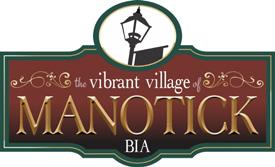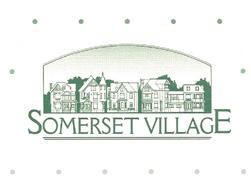




The 10th annual Welch LLP Business Growth Survey has become an important part of the business year for our local economy. Personally, I look forward each year to interpreting the perceptions of business and community leaders and turning that into information we can engage our clients with.
Despite the challenges we all face in terms of improving the business landscape in Ottawa, I am always encouraged and inspired by the work of entrepreneurs and business owners — those who take risks and contribute on a net basis to our local economy.
We need more risk-takers in Ottawa and throughout the country. Productive businesses make for stronger communities. I am glad this issue is starting to get more attention and focus.
We thank our presenting partners: the Ottawa Business Journal, Ottawa Board of Trade and Abacus Data. Thank you to RBC; Perley-Robertson, Hill & McDougall; Le Regroupement des gens d’affaires de la Capitale nationale (RGA); United Way; and Sprott School of Business at Carleton University for their generous support.
As always, Welch re-affirms its commitment to and belief in Ottawa as a great place to do business. We hope the survey is useful to you no matter how you live, work or play in Ottawa.
 Chris Meyers Partner Welch LLP, Ottawa Office
Chris Meyers Partner Welch LLP, Ottawa Office
Thank you to Abacus, OBJ, Welch LLP and all our partners for continuing to invest in the Welch LLP Business Growth Survey to calibrate our conversations around business, city building and our economy. Every year this report measures our status in terms of business confidence issues, providing insights that help identify how we can move forward together.
The intersection between business, community and government priorities must be clearly understood and acted upon with an aligned approach if we are to reach our full potential as Canada’s capital city. A top place to live, work and invest in the global marketplace. Everyone has a role to play, and collaboration is our competitive edge.
Big changes are happening in our city. A focus on region-wide success will leverage our strengths and overcome our challenges. Every move must have a triple bottom line to meet our climate, growth and inclusivity goals. And optimize our resources. Embracing our connectedness and finding common ground lays a strong foundation for our future.
The Ottawa Board of Trade is the voice of business and a key economic development partner in our region. Our mission is to cultivate a thriving, world-class business community. As an independent, non-partisan association, we advocate at every level of government to ensure policies drive business success, community prosperity and economic growth.
Our Build Up Ottawa campaign during the last municipal election called for leaders who were committed to collaboration, growth and innovation. OBOT is a platform for passionate business and community leaders to be involved in shaping the future of our city. Elected officials need our support to set the policies that ensure our community thrives.
We are encouraged to see focus in the report for key priorities, including economic development, downtown transformation and infrastructure investments. These will drive our top sectors, including tech and tourism, and open more opportunities for our greatest assets in small business and young leaders.
Together, we will.
Yours in prosperity,
 Sueling Ching President and CEO Ottawa Board of Trade
Sueling Ching President and CEO Ottawa Board of Trade
On behalf of the entire team at Abacus Data, it is a privilege once again to present the findings of the 2024 Welch LLP Business Growth Survey, the 12th year of this important study.
Businesses are worried about the future.
In this year’s survey, businesses are less confident about the local economy, less than half report their sales increasing, fewer plan to recruit new employees, and expectations about the local market are the lowest we have ever measured, except for in 2020 when we were amid the global pandemic.
Businesses are struggling and overall business confidence is negative — only the second time it has dropped below 100 per cent in the 12 years we have been measuring it in our city. What is driving this?
Several factors contribute to the current state of business confidence in Ottawa. Economic uncertainty looms large, with high interest rates likely here for several more quarters and inflationary pressures impacting operational costs and consumer spending. Additionally, geopolitical tensions and supply chain disruptions continue to pose challenges, making it difficult for businesses to plan for the long term.
Remote work continues to reduce foot traffic in our downtown, continuing to hurt sectors that rely heavily on physical presence, such as retail, hospitality, construction and commercial real estate. All three of these sectors have seen the biggest drops in business confidence over the past year.
The prevailing scarcity mindset among consumers, exacerbated by economic uncertainties and a rapidly growing population, underscores the need for unprecedented collaboration to build more homes, increase capacity in our health-care system, and improve economic productivity.
The survey was conducted by Abacus Data, a full-service Canadian market research firm based in Ottawa, from Feb. 12 to March 28, 2024. A total of 261 business leaders participated.
Thank you to every business leader who contributed to our survey. Your valuable insights make this study possible and we wish you the very best.
 David Coletto Chief Executive and Founder, Abacus Data Board Member, Ottawa Board of Trade
David Coletto Chief Executive and Founder, Abacus Data Board Member, Ottawa Board of Trade
As I was thinking about the theme for this year’s report, many factors came to mind.
I’ve long been interested in the relationship between business and government. Back in the day, the Howlands were prominent businessmen in Toronto. They became actively involved in politics in order to advance their business interests. That’s a bit frowned upon now, but it’s a prime example of how government needs business, and business needs government.
In my own career, I’ve had the opportunity to see issues from both sides and have experienced the collaboration and the confrontation that can arise.
In our city, I think we can agree that we are at an inflection point rarely, if ever, seen before. What is a new vision for Ottawa? How can we succeed, economically and socially? How can we reinvent, reimagine and revitalize? Part of this is the large number of significant projects either underway, being planned or at least dreamed about. Again, rarely have we seen such a time of development and construction.
Add to this the fact that we have a new(ish) mayor and council, tasked with overseeing this giant mandate — daunting at any time, but particularly so at this juncture.
Hence the focus this year on the municipal government. I was keen to gauge the feelings of the business community on the performance of their elected officials, on the functioning of City Hall, and on the gamechanging projects happening in our city. If ever there were a time for business and government to come together, this is it.
To complement the survey results, we reached out to the mayor and councillors to hear about their priorities as related to business. Many thanks to Charlie Senack for his help. Note that transcripts have been edited for length and clarity.
Also thanks to David Coletto for his wise counsel, to OBJ’s awesome design team led by Tanya Connolly-Holmes, and to our loyal readers, who support us in so many ways.
All in all, I think the report brings together the business and government views to reveal the gaps and the common ground. I hope you agree.
 Anne Howland Editor In Chief Ottawa Business Journal
Anne Howland Editor In Chief Ottawa Business Journal

PRODUCED BY
Great River Media PO Box 91585, Ottawa, ON K1W 1KO
PUBLISHER
Michael Curran
EDITOR IN CHIEF
Anne Howland
CONTRIBUTOR
Charlie Senack
ADVERTISING SALES
Wendy Baily
Victoria Stewart
CREATIVE DIRECTOR
Tanya Connolly-Holmes
GRAPHIC DESIGNERS
Celine Paquette
Deborah Ekuma
FINANCE
Cheryl Schunk
IN PARTNERSHIP WITH
TITLE SPONSOR
SUPPORTING SPONSORS


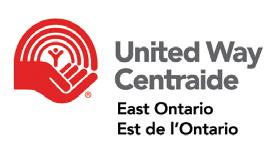
PRIMARY PARTNERS
“For the first time since 2020, the index has dropped below 100 ...”
David Coletto on the 2024 Business Confidence Index
Overall, do you think things in Ottawa are headed in the right direction or are going off on the wrong track?
OBJ: Survey respondents are almost evenly split when asked if Ottawa is on the right track or heading in the wrong direction. Yet, overall, respondents seem supportive of many things happening in the city. What do you think accounts for this apparent contradiction?
DAVID COLETTO:
What three words describe why you feel that way?
What three words describe why you feel that way?
In our experience conducting public opinion research nationally, it’s common to encounter seemingly contradictory views, and Ottawa is no exception. Business leaders in Ottawa reflect general Canadian sentiments — while they may support significant city projects and initiatives, their overall perspective is influenced by their everyday experiences and the broader economic climate. Currently, tough economic times are leading to a perception that, despite progress, things could still be improved. This sentiment is magnified by “inflationitis,” a term I use to describe the deep-seated insecurity and anxiety driven by ongoing inflation. Notably, while only 26 per cent of Canadians believe the country is headed in the right direction, Ottawa’s business leaders are comparatively more optimistic about their city, showcasing a unique local confidence amid national concerns.

How would you rate the municipal government’s performance when it comes to each of the following?
n EXCELLENT n GOOD n OK n POOR n VERY POOR n DON’T KNOW
OBJ: What results jumped out at you?
DAVID COLETTO:
One thing that stood out to me was the gap between how business leaders feel about the direction of the city and its performance in certain areas, and how they feel about the mayor. Full disclosure, I’m a good friend of Mayor Mark Sutcliffe and was his campaign pollster and a senior strategist, but I think these results reflect a generally positive impression of the mayor’s performance so far, even if many others feel anxious about the broader economic and social conditions in the city. Interestingly, among those who feel the city is headed in the right direction, many credit the mayor himself for this. I think business leaders recognize that many of the problems facing the city — light rail, fewer workers in the downtown core, and a rise in homelessness and addiction disorder — were not his fault and that he’s working to improve them.
Sixty-five per cent of business leaders approve of Mayor Sutcliffe’s job performance, almost 20 percentage points higher than city council’s overall job approval.
Do you approve or disapprove of the job Mayor Mark Sutcliffe has done since being elected in 2022?
STRONGLY APPROVE APPROVE DISAPPROVE
STRONGLY DISAPPROVE
DON’T KNOW
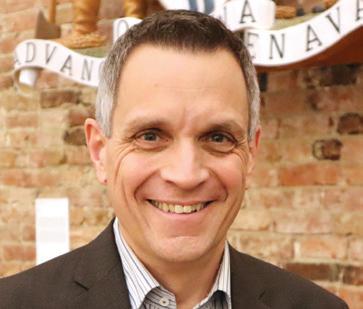
Tourism, tech, talent and the downtown: I’ve always talked about the need for us to grow our economy and strengthen economic development and business creation. If we are going to be successful as a city, we need a strong economy. It creates jobs, attracts people to the city, and helps some of the other challenges we are facing.
It’s a significant priority that we are focused on doing through a number of ways. For example, working closely with the technology sector, which is already an asset to our community. The tourism sector is vitally important to Ottawa and we see potential for growth in that area. That was a big part of my recent visit to London, England to meet with event organizers who could be bringing events to Ottawa in the future.
The future of downtown is an economic consideration. It’s a file we need to work on very hard. There is big change coming to downtown Ottawa and we need to be ready for that if the federal government is moving out of offices. I want to work closely with the federal government, who
have a duty and responsibility to work with us. We need to have a strategy for how the decommissioning of buildings is going to roll out. It needs to be done in a way that is sustainable and not devastating to our local economy. It could include converting existing buildings into residential, building new residential, and creating new attractions. It’s an opportunity if we tackle this appropriately.
Many of our attractions are currently on the outskirts of downtown. There are tourist attractions like Parliament Hill and the National Art Gallery or National Arts Centre, but a lot of the performing arts centres and museums are on the outside because the core is taken up by federal office complexes. We need more reasons for people to come downtown, live downtown, shop downtown, and socialize downtown. We need more restaurants, nightlife and entertainment.
Many of the challenges businesses are facing are areas where we can facilitate, but we can’t deliver the solution. There are a lot of talent issues for attracting people to Ottawa, having people available to work, and the rising costs of doing business. We have to do everything we can to keep costs as low as possible. That is why I work hard to keep tax increases as low as possible so small businesses don’t need to pass those costs on to customers.
Do you approve or disapprove of the job that council as a whole has done since being elected in 2022?

Revitalizing the downtown: My first priority is investments that will help revitalize downtown. There can be a whole bunch of things, like office-to-residential conversions and housing investments. We also need more grocery stores, hardware stores, things that will make it easier to live downtown.
I think you are dreaming if you think workspace dynamics are going back to 2019. Suburban areas saw real boosts because of work from home and more of a need for 15-minute neighbourhoods — and that’s a good thing. Parts of Centretown that are really thriving are areas that really appeal to residents. I think we need to be creative, we need to innovate, and we need more people living in the core. We are missing about 80,000 people coming in and out of our downtown
and that’s resulting in vacant storefronts. There are a number of office-toresidential conversions happening. The city is going to be renting a building for newcomers. It’s not an avenue for affordable housing, but it is an opportunity to have a building filled with more people and bring more people here. That supports local businesses and helps them to survive.
Investing in the arts: I also want to see investments in the arts ecosystem. We have a lot of spaces that have been shut down over the years and others that have been converted. There is a real need for more studios, theatres and places for artists. There are some conversations about how to revive Barrymore’s Music Hall, which I think would be fantastic. There has been a lot of conversation over how to make Ottawa a more musical and artistic city. We can’t do that if we don’t make it more of an affordable city. Creative people are being pushed out of their spaces. On one hand, we have a crisis with vacancy, buildings that are sitting empty, yet we have artists who want space
but can’t afford it. When you think of the best cities to visit like New Orleans or New York City, they have so many art spaces.
This summer, we are going to be doing some pedestrian-friendly projects to help animate downtown and make sure more people want to come out.
Social challenges: You can’t revitalize downtown if you ignore the social challenges. We have the new pilot for nonpolice crisis response, which will have a great impact on business. I’m also interested in other ways we can make Centretown a great place to do business and live.
My hopes are when we better support people, we make a city that’s better for everyone. When the most vulnerable folks in our community thrive, the rest of the neighbourhood does, too.
The pandemic was not kind to vulnerable folks in our community and the poisons in the drug supply are creating a lot of erratic behaviour. It has a dramatic impact on the quality of experiences in downtown Ottawa and it’s scaring away new business.
Continued on next page
Have you had any interactions with staff at the City of Ottawa in the past 12 months as it relates to your business or organization?
Continued from previous page
Businesses are struggling with folks who have high needs, who are having a mental health crisis or an overdose. That’s why this non-police crisis response is so important. People want a place to call when they need support who are not the police. Business owners are some of the most excited about it. They see the issues on their doorsteps. They don’t want people to feel unsafe when they come into town.
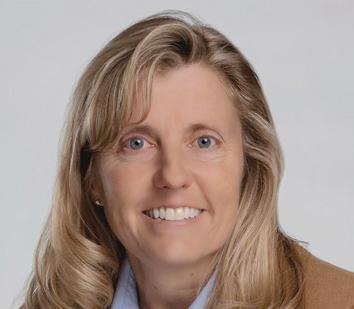
Overall, were you satisfied or dissatisfied with your interactions with the City of Ottawa?
Talk up the tech park: The Kanata North tech park was designated a special economic district. I want to make sure it isn’t just a fancy name and that it means something. As a councillor, I struggle to make people aware there are 540 businesses at the tech park. You have multimillion-dollar companies that provide jobs for 30,000 people. It’s a significant area for the city. We are Canada’s largest tech park and people don’t even know about it.
Historically, with the city being a tech hub, it’s started having spinoffs and growing and growing. Companies love it when the key parts of their product are made down the road. You think of productivity and it decreases costs.
When we were doing our Official Plan we looked at how this is a commercial area. When companies all over the world look and see where they might want to locate and invest, they are going to look at areas like that where there are plans for collaboration. One company’s representative can bump into another at Hub350, which is a place where people can learn and share their thoughts. CEOs can talk to each other and see how they can support each other, use each other’s products, and collaborate.
Each tech company employs Kanata residents, who then have good, high-paying jobs who are then able to buy a house and pay property taxes. With that, the city has more revenue for everyone. Some of those
Generally speaking, do you think the way the City of Ottawa operates has a positive, negative, or neutral impact on your business?
OBJ: It seemed surprising that about half of respondents were neutral when asked about the city’s operational impact on their business. Why do you think this was their response?
DAVID COLETTO:
people start their own businesses; their relatives open up stores and restaurants. Then every one of those businesses pays significant commercial property taxes to the city. All of this money is generated in the park and helps the city’s overall budget. What I’d like to see is this special economic district be as well known as Silicon Valley is in California.
BIA collaboration: The Kanata Central BIA has just expanded its boundaries
and has taken on Kanata South and some malls in Kanata North. They are working on their strategic plan. I want to make sure the Kanata Central BIA and Kanata North Business Association appreciate each other because they are so connected and the promotion of those small companies will help bring new talent to the tech park. We now need more restaurants and fun things to do to make Kanata a place to work, learn, play and innovate.
Continued on next page
Most businesses, like mine, seldom interact directly with municipal operations. Since founding Abacus Data 14 years ago, I have not once needed to engage with city officials for my business operations, as my company does not require a cityissued business licence, nor do I own property within the city. This suggests that the nature and sector of a business significantly influence the necessity and frequency of interactions with city administration. Consequently, the type of business largely explains the neutral stance observed in the survey results.
How important would you say public transit is for your customers, staff or team in terms of getting to your workplace?
Continued from previous page
WARD INSIGHTS GLEN GOWER
STITTSVILLE WARD

Better transit for workers:
Improvement of transit to support employees is a priority. Mostly in Stittsville, that’s retail and restaurants. They need to get to work quickly and efficiently. The new OC Transpo bus network launching this summer will likely benefit that. It’s going to be excellent for Stittsville. There are going to be a number of improvements for local transit riders and for people getting to the Kanata North Business Park or downtown.
A lot of employees in retail tend to be on the lower end of income. They’re making minimum wage and might not be able to afford a car to get around the city. Better and more reliable transit allows those employees to get to work affordably. Better connections across the city gives companies and businesses more access to workers, and employees will have more opportunities of where to go.
Carp Road upgrades: We are working with a number of landowners on Carp Road to try to get water and sewer servicing. It’s going to be upgraded to two lanes in each direction and a multi-use path on both sides. We are trying to make sure the water and sewer infrastructure is installed now with the capacity as it grows. Many of the properties are on septic and that limits their ability to build a restaurant or spa. Construction should start next year. Right now, it looks like a rural road. It hasn’t changed much since the 1980s. It was mostly single homes back then, but since Highway 417 was extended there has been more development. A lot of the homes have been converted into offices and light industrial. It’s a pretty significant route for commuters and people getting in and out of Stittsville. Continued on page 14
What do you believe should be the top three priorities for the city in 2024?
Continued from page 12
I’d like to see it cleaned up a little bit. It should be a real gateway into the Stittsville area. We don’t want huge developments like strip malls, but a better environment for local, independent businesses to set up shop.
Easier permit processes: I do continue to hear from a lot of small business owners about wanting to have a simpler process for permits — whether that’s contracting or opening a new business.
KITCHISSIPPI WARD
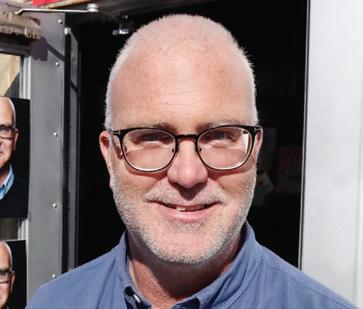
Paid parking:
We are having a discussion in the ward about paid parking right now and one of the objections we have had is the burden it will have on staff who are relying on street parking to get to their jobs. We can address that with a robust, affordable transit system that lets people take jobs in Kitchissippi Ward and get to them. We know our streets are going to become more congested and parking is going to be more in demand. Transit is one of my top priorities and I think one of the stakeholders in that discussion is local businesses.
The study of Kitchissippi parking to determine if paid parking is warranted was passed during the lockdowns and decline in traffic. But traffic levels have returned to almost normal across the city and we have very significant parking pressures. The only tool we have to try and manage parking pressures is paid parking.
I am listening to the arguments for and against, but I’ve let residents know I’m inclined to support this when it goes to committee unless I hear a compelling argument otherwise. I think small businesses need to be worried about the perception that there is no parking. One of the things paid parking does when it works well is ensure there is ability for parking. What I’m interested in is not necessarily if paid parking is approved,
but getting the rules around that framed; what the rates are going to be, what hours would be paid. I want to get paid parking right, rather than opposing paid parking.
But some businesses and residents feel it’s not warranted, it’s a cash grab and that there are other alternatives. There are concerns it will increase pressures on the residential side streets.
Commercial rents: Small business development is something that has grown in importance, particularly since the pandemic lockdowns. We need to make sure that businesses can continue to thrive on our main streets.
I agree with residents that the momand-pop shops, the family-owned shops, are the ones that contribute the most to our vibrant neighbourhoods. But they are facing increased challenges with rising rents and online shopping.
As a city, there’s not much we can do about rising rents — that’s entirely in the scope of this provincial government — but what we can do is ensure there is supply that can discipline the pricing that we see on a main street.
One of the best things about living in Hintonburg is I’m regularly shopping at places like The Spaniel’s Tale Bookstore or The Record Centre, places where owners are working in the store and supporting our events. But they are struggling with commercial rents. While the rents on our main streets will move in lockstep with rising property values and increased demand, we have zoning rules to try and unlock non-traditional areas for commercial activity. WARD INSIGHTS

Keep small business in mind: I find it challenging to talk about business priorities without thinking about all the density we are going to be welcoming into the neighbourhoods. Having an
environment where small business can be part of that vision is incredibly important. How will we encourage small businesses versus what we see often for example at Lansdowne, where larger corporations can withstand a few losses, can take larger floor plans and can take in the expanded costs of street frontage. We are trying to figure out how to do that in a neighbourhood that is currently designing its density.
I’m very interested in understanding the degree to which the City of Ottawa mandates that you have ground-floor storefronts and how they examine those spaces. What is the square footage?
How does it relate to the parking and transit options available? Some of the complaints I’ve heard are that it doesn’t match the market and so they sit empty. With COVID recovery, small businesses are still struggling with repaying loans and a changing workforce.
My husband is a small business owner. I know what it’s like to have busy spells and dry spells, while trying to keep growing and pay employees. Some people on council are thinking about investing in Ottawa, the tech sector, and that’s exciting as well, but we do have a strong small business sector here that we could do better to liaise with.
My ward has a lot of R1 zoning that is going to change through the new comprehensive zoning bylaw. We are going to see our arterial roads welcome many, many new residential units. We are trying to get the Baseline rapid transit corridor through here, which can move people from neighbourhood to neighbourhood, east to west. Those conditions are healthy for small businesses and we need to make sure they can be competitive.
Support for BIAs: It’s not only to have a small business startup, but to have an environment where they have a strong voice and a direct impact on Ottawa’s economic development policies. I can’t help but talk about BIAs in this respect. We only have one BIA in Bells Corners along Robertson Road. It’s just under new executive leadership and we are excited about what that expertise will bring. Continued on page 16

Continued from page 14
Economic development is its own skill, its own commitment. Small business owners who are trying to make a go in what can be a very challenging environment might not have the time or headspace to think about beautifying their landscapes, advocating for better transit, or other common goals that would improve their businesses. A BIA could be a very exciting tool, but the City of Ottawa doesn’t have a lot of internal staff to support BIAs and there is a real unevenness that we’ve seen.
Transportation: We don’t have ways for Ottawa residents to move around to different neighbourhoods with ease to experience the local shopping identity. If you look at what Bells Corners is experiencing, people are on the highway bypassing it all the time to go to Kanata to shop. It’s going to be very hard for new businesses to attract new customers if they are encouraged to fly by in their car.

Beechwood redevelopment: My main priority is the redevelopment of Beechwood Avenue. We are the last commercial traditional main street to have experienced a redevelopment. It’s quite necessary because it’s where multiple former municipalities met. It’s one of the reasons why it’s the disjointed mess that it is. The tools we are going to look at include a new secondary plan that will look at land use along that corridor, as well as the transportation master plan to ensure there are adjustments to the second stage that will enable major streetscaping. Right now, with the way policies are written, we need to have integrated stormwater management programs in order to take on a project like this. But all the pipes are great and will be for another 30 to 50 years, but the street is not.
We really want to ensure the infrastructure and streetscape goes in line with the 15-minute neighbourhood. We are seeing plots of land be redeveloped for mixed use and we want to ensure the public accommodates that. We want to make sure it thrives, that it’s more accessible and to make sure it can accommodate the growth of new community members and businesses.
Reduce red tape: We need to streamline resources to help small businesses. We need to reduce the red tape people encounter when they want to do the simplest things. My hope is we see and leverage the technology we have to create a portal where people can obtain substantive information that might help them navigate any regulatory issues — whether it’s a need for applications, business licensing, or planning applications.
The city does not issue direct grants to small businesses because we are not allowed through the Municipal Act. Notwithstanding that, there is a huge
system for grants out there and it would be interesting to share materials on a portal to help assist small businesses and help them obtain information.
Resources for small business: My third is really just ensuring we continue to bring in more partnerships with stakeholders in the community. We need to strengthen relationships with the Ottawa Board of Trade, the coalition of BIAs, and the Chnge Mker Innovation Hub based in the ByWard Market, which is a huge support to Black businesses. They’ve been doing a lot of work in response to providing support to small businesses. We also need to do more to talk about entrepreneurship.
You’re seeing more people launch their own businesses, start their dreams and have side hustles. Youth are very excited at the prospect of setting up businesses. But the challenge is how they can stay sustainable. It’s even worse during tough economic times. We need to provide access to a wide array of tools so they can prosper and grow. And we need to make
From a business perspective, do you support or oppose a new hockey arena/entertainment centre being built in the downtown area?
DON’T KNOW
sure there are opportunities for people to profile their products and initiatives. We are losing 80,000 to 100,000 people who used to work in the downtown core. People are being more conservative about the purchases they are making, especially with financial pressures caused by inflation. BIAs are helping a lot by creating digital resources to help businesses with their marketing support.
WARD INSIGHTS
SHAWN MENARD CAPITAL WARD
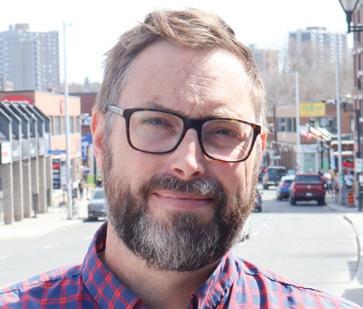
Incentives for small business:
My first priority is tax incentives, fee incentives. There is so much the municipality can do to support small businesses that way. It could be as simple as the patio fee. During the pandemic, we lowered it to zero and we saw so much uptake. It improved the streetscape, the
ability for people to take in a restaurant, pub or coffee outside on the city right of way. It was supposed to go back up to 100 per cent this past year, but I brought forward a motion to bring it down to 75. I’d like to see it very low, if not zero.
Other tax incentives associated with that are things like the small business tax rate for smaller retailers. We have lowered it to 15 per cent but it’s not necessarily then passed on to those small businesses. I want the city to send letters to those large landlords stating if there is small retail space, the intent of this program is not to enrich well-to-do owners, it’s to help the small businesses in those spaces.
There are so many other business incentives in other cities that provide commercial loans or grants to help facilitate meeting places or city-making, beautification on our main streets. BIAs play a role in this certainly, but individual businesses don’t have the BIA.
Streetscaping: What I’d really like to see is changes in how people can travel around. What percentage of people
walk, bike, take a scooter, so that we can empower small businesses through changes that we know can make a difference. When you add bike lanes to a traditional main street it benefits businesses, in the core especially. You need to make it more of a place where people want to be, a destination in those areas. People don’t want a small sidewalk where there is traffic and no ambiance. Glen Avenue during the pandemic, we actually shut this street down and created a patio. The first year it was open was fantastic. I can see things like adding bike lanes, bus lanes, wider sidewalks that would be a huge benefit to businesses.
Work flexibility: There is all this discussion about workers getting back to the downtown core five days a week and I don’t agree with that at all. People are more productive when they have options and choices. It feels to me like we treat people like cattle when we say they need to be in the office five days a week, so that the people down there can benefit from them. Continued on next page
Continued from previous page
Not only does this take away from businesses who have benefited from people working from home, it doesn’t treat individuals the way they should be treated, with choice to work and their own productivity. The solution is actually to create changes on the street and in the area with our bylaws by creating more housing in the area and innovating around work hubs. We need to attract people in and that’s not going to happen by forcing people back into an office where they don’t want to be.

Procurement: I think we have to look at our procurement and make sure that we are looking at our local businesses when we are asking for bids on things for the city. We use a lot of local small businesses. It’s an opportunity to use people who live right here and have the skills. We have an incredibly talented pool and we should make use of it. We have high-tech and a lot of spinoff businesses who work well with that. We need to emphasize shopping local.
Welcome new businesses: We all know the issues downtown is facing with less workers, but there are businesses across the city we can support. In my own ward, I’m blown away by the amount of restaurants opening up and the diversity is amazing. I’ve got a brand new Indian restaurant, one that is Afghan, and another that is African. For a city of our size, the choice that we have is incredible. It proves that we are not boring. We’ve got a lot to offer and, with all the newcomers coming in, they are anxious to support these businesses.
I’ve been fortunate for the Britannia Coffeehouse. They opened up a business in a non-business area and created something for the local community to walk and cycle to. That’s been an amazing boost and it really built community. People who live locally meet there. Right across the street is the Britannia Bake Shop. These were in neglected, closed-down buildings and they
just blossomed. It’s neat that people are walking and cycling to them. It’s eco-friendly, which is pretty special. It’s another reason to go local. You aren’t driving all over the place. These places that I’ve mentioned are all on transit routes so you can get to them. You can cycle to them. The infrastructure is there — it could be better but we are getting there. As we build the transit stations we want to encourage that. At Lincoln Fields, we want to see a variety of places open up and encourage developers to attract smaller businesses. It helps build community when we have variety. They are attracted by intensification because it means more customers.
Roads and bikes: We had a meeting where we’ve got a working group of cycling advocates for Bay Ward and the need for a safer Carling Avenue came up over and over again. I always look very sadly just past Kirkwood where cycling infrastructure ends. I see what’s been done with Scott Street for cycling and it’s been great. I believe we can do that here, too. If people can get around their community by bike, they are going to shop locally.
We desperately need a Carling BRT. We’ve been frustrated because I was told when I was elected the first time that it was coming. You can blame the pandemic for the first stall, but it’s not an excuse anymore. Look at the development on Carling Avenue near Clyde Avenue. Major infrastructure and development projects are in the works. They are relying on bus rapid transit to be part of that.

Remote work:
There is a very vibrant community of small and independently owned businesses in Barrhaven and we have to make sure they are supported at the city level and that we continue advocating for them at the provincial and federal levels to keep our community vibrant. I’m going to keep advocating for working from home because it’s been a benefit to our suburban businesses.
The small businesses are some of my favourite businesses in Barrhaven. They bring a flavour the larger businesses just can’t bring. We need to ensure that they can continue to operate and continue contributing to our communities. At the city level, there is not too much we can do directly, but we can do a lot of advocacy with them and on their behalf.
The main thing is it’s just kept more people in Barrhaven during the day. Working from home has been very beneficial to the local businesses and for the community. It reduces the amount of traffic that has to go downtown or wherever. I understand the need to go in once in a while, but generally speaking, if a job can be done remotely there is no reason to make people ride the bus for an hour or drive for 30 minutes to be at a different place where they’d do the same thing they could be doing at home.
We should support our own communities. We do have a responsibility to ensure the downtown succeeds, but it shouldn’t be put on the backs of having people work and commute there. We need office conversions.
Underused areas: Despite my ward not having many development opportunities, the city has land in my ward that is underused right now. I see those as great opportunities for growth and development to bring more people into the community, introduce more small businesses and, if I’m successful, we’d be bringing people right to our transit routes. I want to bring people to where transit is, instead of just giving them transit to reach places.
The three examples in my ward are the Fallowfield park and ride, the Nepean park and ride, and the land at Greenbank and Highbury Park that’s reserved land for the maintenance facility for the trains for Stage 3 LRT.
In the example of Fallowfield, that park and ride is some of the best real estate in Barrhaven. It’s a sea of asphalt that’s filled with 40-50 per cent capacity — if that. I see a lot of potential there and maybe sell off a huge chunk of the land and develop it. You can bring density to the transit core and develop a mid-density development that will bring people to the area, increase our tax base, and maximize use of that Iand. Continued on page 23
Fom a business perspective, do you support or oppose the redevelopment of Lansdowne?

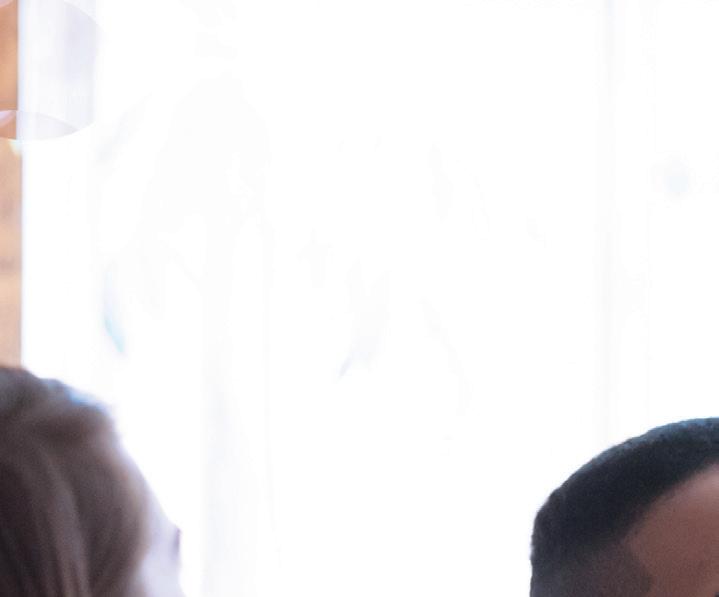


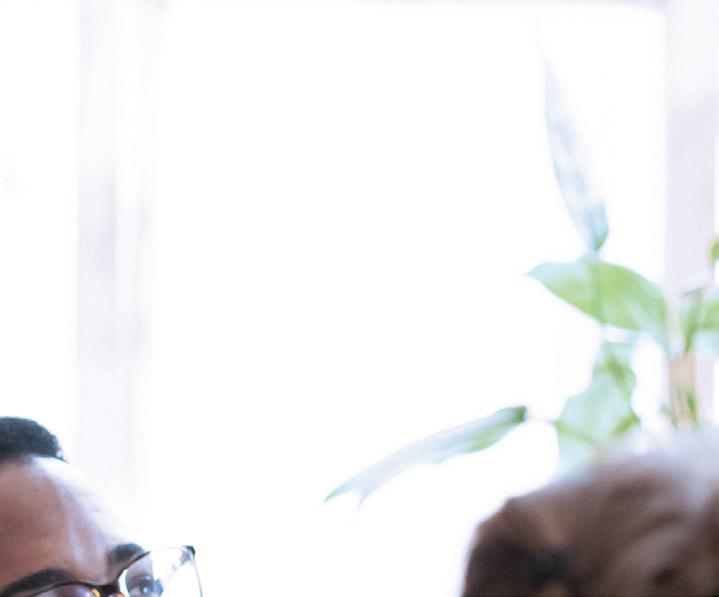













How important would you say it is for the business community to be involved with the city?

Continued from page 18
Nepean Woods is even worse because it’s practically unused. Even though it’s not on a rapid transit corridor, it’s a community hub where we can sell it off and develop it in some way. It would be good extra potential for the existing businesses in that area.
The lands for the Stage 3 LRT are about the same. If we shelve the project for a long time, I don’t think we should hold onto the land in case it happens.
Better bus routes: We are realigning our bus network after LRT line 2 opens and the goal of that is to ensure local travel is much easier. It’s not something OC Transpo was good at, even before the pandemic. From reorienting the service, you have people who want to visit a small business in the community and they can now go from the east end of Barrhaven to the west. It’s no longer a 40-minute bus drive or a 10-minute drive. Better connectivity through light rail will help Carleton University students and allow people to access businesses in areas like Preston Street a lot more easily.
Every transit system in Canada that’s gotten close to or exceeded pre-pandemic ridership is locally based. Edmonton’s bus routes are back to about 100 per cent, but their LRT level is only 40 or 50 per cent. Same thing in Toronto, where their bus service is increasingly higher.
Once it all stabilizes and once we know what will happen with federal workers, perhaps we can be even more dynamic with our scheduling and make it better to commute. WARD INSIGHTS

More focus on the east end:
The City of Ottawa and council approved the Orleans corridor secondary plan. It was an immense amount of work and public consultation. It is all about planning the
city and east end for the growth we are currently seeing. It’s about bettering pedestrian areas like St. Joseph Boulevard. It’s going to increase density and leverage opportunity with the eastern extension of LRT to Trim Road in 2025 and look at opportunities to attract businesses with the LRT.
I want to see progress made on the secondary plan. We’ve approved it, we’ve supported it, now it’s time to start tapping into its potential of attracting development and business, seeing those investments for the vision of a better east end.
We have started to see the east end be given more priority over the last few years. We will be one of the first communities to receive LRT in its operational capacity. We will see land use changed for mixed-use density projects that will really accommodate St. Joseph Boulevard. We haven’t seen a pedestrian-facing, welcoming streetscape. We want to see the vision for this really high-potential corridor for the east. We’ve been working in collaboration with the Orleans BIA to see these opportunities realized.
The timelines are long-term. There are short-term goals within this plan that can be achieved through renewal of city investments like a road renewal. This is a very long road geographically and there is a lot of diversity. There are parts for pedestrians, farmland and industrial areas. What this plan has the opportunity to do is look at the LRT stations and look at zoning around it to leverage new businesses and residential where people want to live.
Transit: I’d like to now focus attention in Innes Ward with councillors Tierney and Kitts to see if we can look at driving the economy in that area to focus on not just big box stores and strip malls — which have their benefit — but what Innes Ward can be as a driver to the east-end economy.
The east end and south end are growing at rates that exceed the transportation capacity. It’s been doing that for a long time. We’ve had to broaden connections and increase capacity where possible. So many houses are being built and there are not enough active transportation networks.
In terms of the extension of Brian Coburn Boulevard, it’s not something
we’ve landed on with the NCC and it’s discussions that are ongoing. What we have agreed on is a realignment and resurface of the road. That means additional conversations will take place about possibly including a connection to the south end of the city and a connection to the airport. That will boost our local economy. We’ve been able to tap into that in ways we never have before.
In the east end, the Cumberland transitway has been in the books for decades. We knew we’d want to extend the transitway south because of the growth in residential and business. However, it’s not something that is feasible in the short term. We are continuing to make the case to advance the work on the LRT so that we can access our transportation efficiencies so that we can run transit to people who want to use it.
Our transportation network is reliant on multiple modes. The LRT and train itself is a huge investment and it’s taking up the most significant amount of funding because it’s a new build. The extension of it is necessary in Stage 2 to bring value to Stage 1. The continuation to Trim Road means that we in the east end see value to Stage 1.
The bus network is equally as important because we can’t fund the train in every community in Ottawa. Maybe that comes in future decades or generations.
Promoting Ottawa: This one is somewhat general but it’s important. It’s to continue as a city, not just the east end, to establish ourselves as the place to be worldwide. We have done an incredible job in the past promoting Ottawa as a destination for businesses to set up shop, for tourists to visit.
I’m not sure if it was because of the pandemic, but we need to get back to that place of marketing Ottawa as a destination for global businesses and corporations.
For a long time, the east end has not seen the same level of tourism attraction or investment as other parts of the city. The LRT will give people easy access to get off their plane at the airport, get on the train, then transfer and head all the way east to the Shenkman Arts Centre, as an example. Continued on page 25
From a business perspective, how important would you say is the reimagining/redevelopment of the downtown core?
Continued from page 23

Young professionals:
My first business priority for Barrhaven is to be an attractive community to young professionals. It means the community needs to be affordable; we need to attract people because they can afford to live here, they can afford groceries, amenities and activities like recreation. They need to have a house where they can comfortably pay rent or a mortgage and be able to still live.
We need good-paying jobs. You can’t pay those things and have a lifestyle that’s affordable if you are working retail. It’s an important part of our ecosystem, but we need jobs that pay more than minimum wage and are professional, technical. It’s why I’m very enthusiastic about the growth of the tech park in Kanata, where a lot of people from Barrhaven work. It’s why I’m keen to work with stakeholders in investment through high tech, R&D, and scaling operations for our businesses, which come with very skilled trades for young professionals.
If you live in Toronto right now and you’re graduating from university, I think we want to use our competitive edge to incentivize those people to come and live in Ottawa. If we are going to compete with the Torontos and Montreals, we need to have the amenities that attract them.
Transit: Improving our transportation system. That includes our public transit. There is a bus route review that’s about to baseline the post-pandemic realities and I am optimistic about the net benefits we will see as a city from this. It won’t be perfect, but it’s inefficient for us as a city to be having 88 passenger buses going downtown with six people.
Young professionals need to be able to live in Barrhaven. As we grow, we can’t do that if we don’t have a public transit system that people can trust and think is safe and reliable and are willing to use.
Major infrastructure investments are coming for our Greenbank realignment
and the Barnsdale interchange, which will be huge components of our transit infrastructure system in order to help people get around here.
Synergies: We need to work together with the Ottawa Board of Trade, Invest Ottawa, with our BIA and Ottawa coalition of BIAs in order to empower those institutions and create synergies. We need community events with local sponsorship like the Taste of Barrhaven, Canada Day in Barrhaven, the New Year’s Eve event, the spring market. We need more opportunities to bring our businesses together, give them the opportunity to be seen, and to make people proud to be here in the community.

Mix of businesses: I think that people who live here want to be able to walk to a local coffee shop and experience something that is unique to their neighbourhood without having to drive far. It’s about good planning, encouraging mixed-use developments, and creating conditions for businesses that are different from a big-box store approach, which I think is very expensive. Not many stores need a Walmart-type space. We need to encourage developers to take advantage of the mixed-use zoning we have and create space for new businesses.
In terms of supporting the businesses that are already here, I don’t think direct incentives are the way. I think we can do more promotionally. We need to make areas more accessible, we have a lot of big-box plazas here that can be challenging to navigate. It’s very traditional. Here is a giant parking lot, here are the stores. We need to make them more accessible to different modes of transit.
Transit connections: We are going to be facing a service reduction with transit. We are getting rid of a lot of
neighbourhood routes. What we’ve been told is we have to stabilize the system and make it more reliable before we can grow it again. I’m not sure I agree with that approach, but it is what it is. We need to make sure the routes make sense. I have T&T Supermarket in my ward and I didn’t realize how popular that store was until we were doing the route review consultations. People also need to get to their employment. In these service-type jobs, people might not have vehicles.
A redevelopment of the South Keys shopping centre is so critical because we are going to be having so many people flowing through with the OTrain extension. We will benefit from the trains also going to the EY Centre and the airport. Potential visitors to Ottawa can come here. If we have a great coffee shop, good retail, or a place where they can walk and shop, travellers might actually stop here and do something before heading downtown. We’ve already up-zoned all the land here to allow for mixed-use residential. We are limited because of the airport but we can still go up to 20 storeys.
I’m sad because Bank Street is being redone but it basically stops as it hits my ward, and then they are widening Bank Street just south of my ward. They literally skipped over. It’s very evident as you travel down Bank Street through the Glebe into Old Ottawa South and then to Alta Vista how it changes. Once you get here, it’s not cycle- or pedestrianfriendly. It feels like such a missed opportunity.
Pathways: The Greenboro Pathway is a total off-road pathway that connects local roads and goes from Hawthorne Road to basically Albion Road. Then it dumps you out and that’s it. We don’t have any other cycling infrastructure. We are trying to create a connection where you can take your family on or go to the movies with your friends. We’ve hired a consultant to create a safe connection from Pebble Road up Cahill Drive to cross Bank Street and integrate into South Keys. I’m thinking if you feel like you’ve got a safe way to get to the mall, you might go there more. Would any parent want their kids to come to the Walmart by themselves on a bike? Probably not. Providing that level of safety opens up opportunities.
www.obj.ca/subscribe



without leaving your job
Sprott’s Professional MBA Program is designed specifically for busy professionals, with a convenient schedule and a focus on the knowledge, skills and vision needed to lead with purpose. Learn in a dynamic and active environment from world-class faculty and classmates who bring multidisciplinary perspectives to discussions - all while balancing your work-life demands. Make your next career move. sprott.carleton.ca/pmba

In your last fiscal year, did your sales and/or revenue increase, decrease or stay about the same from the previous year?
How does your net income in your most recently completed fiscal year compare to the previous year?
OBJ: This year’s Business Confidence Index moved downward fairly significantly. What are the reasons behind this?
DAVID COLETTO: The Business Confidence Index takes into account five metrics that business leaders report to us in this annual survey. For the first time since 2020, the index has dropped below 100, indicating an overall negative business sentiment in the city.
The biggest factor in pushing business confidence down for the second straight year is declining confidence in the overall local economy, a drop in hiring intentions, and continued pressure on profitability due to the rising cost of doing business.
The sectors that have seen the greatest shift are hospitality and construction as consumer spending on travel and leisure soften and construction costs — due to the cost of borrowing — remain high.
Over the next year, do you expect the market for your business sector to ...
WORSEN
In the next year, do you plan to ...
Perley-Robertson, Hill & McDougall LLP/s.r.l.
“The survey identifies the underlining and evident uncertainty felt by many businesspeople in Ottawa. There appears to be a lack of confidence in the local economy and in the direction that the city is taking. While the lowering of inflation and reduced interest rates would hopefully help, we remain mindful that issues such as the revitalization of downtown and getting the LRT moving will be of utmost importance to the Ottawa business community.”
—Timothy Thomas, partner, Perley-Robertson, Hill & McDougall LLP
Compared to a year ago, is credit ...
PARTNER CONTENT
Welch LLP
“Reduced
market expectations and employment plans are a red flag. Public-sector employment growth is obviously a huge contributor to our local economy — but we need more private-sector jobs here and we need them throughout the country. A stronger private-sector employment base is good for everyone.”
— Chris Meyers, CPA, CA partner, Welch LLPCompared to year ago, would you say that your confidence in the local economy has …
PARTNER CONTENT
Sprott School of Business, Carleton University
“As
the rapid pace of technological innovation accelerates change across business and society, it is critical to develop talent and leaders with the knowledge, skills and entrepreneurial mindset to harness the opportunities of these advancements for the betterment of our local and global economy.”
— Dr. Howard Nemiroff, interim dean, Sprott School of Business, Carleton University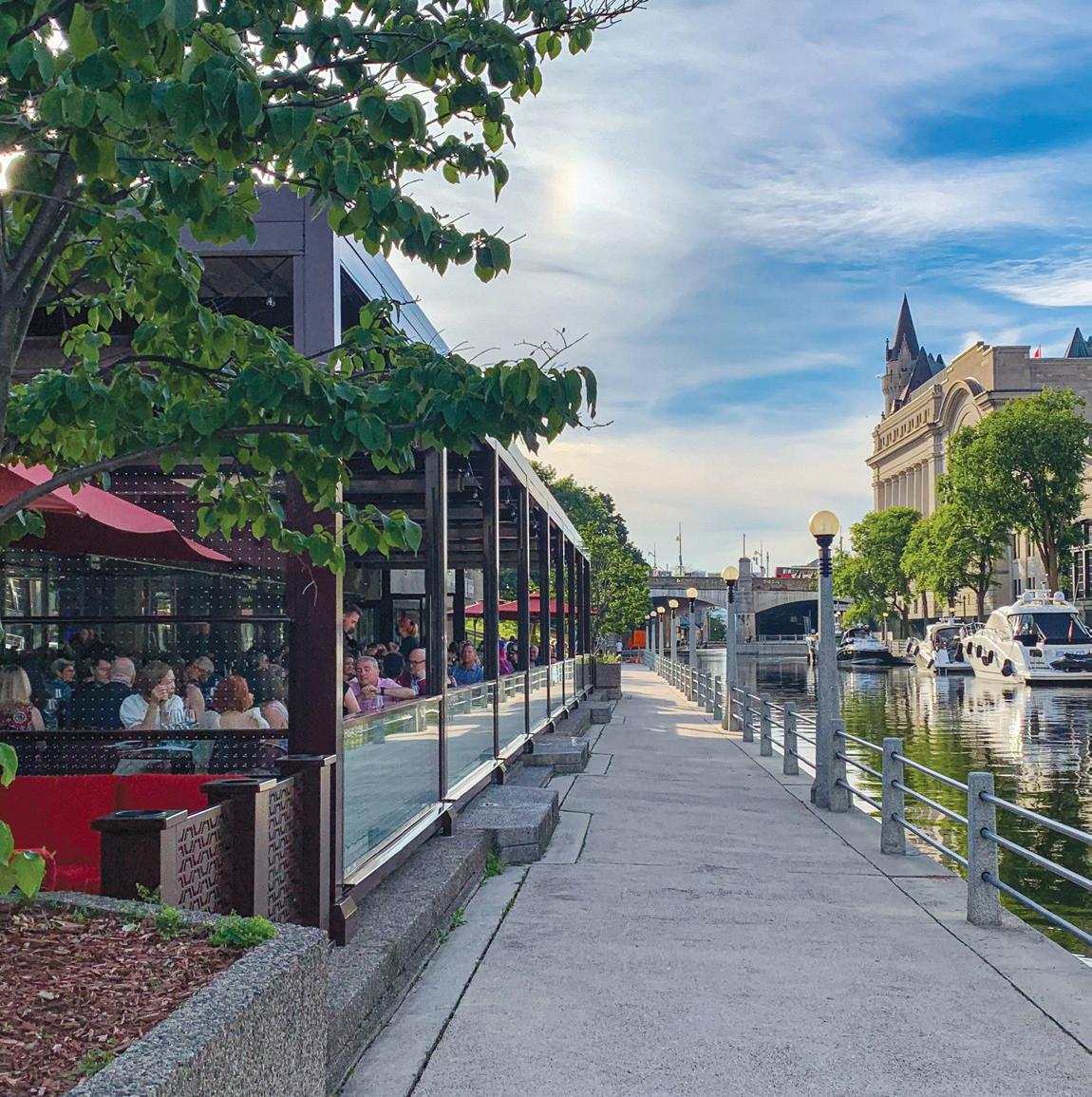


Which industry does your organization operate in?
How many employees does your organization have?
Where in the region is your business primarily located?
In which ward is your business primarily located?
WARD 18: ALTA VISTA 5%
WARD 12: RIDEAU-VANIER 5%
WARD 9: KNOXDALE-MERIVALE 4%
WARD 16: RIVER 4%
WARD 6: STITTSVILLE 3%
WARD 10: GLOUCESTER-SOUTHGATE 3%
WARD 8: COLLEGE 3%
ONLY 3% WARD 13: RIDEAU-ROCKCLIFFE 3% WARD 23: KANATA SOUTH 3% WARD 1: ORLÉANS EAST-CUMBERLAND 2% WARD 2: ORLÉANS WEST-INNES 2% WARD 7: BAY 2% WARD 5: WEST CARLETON-MARCH 2%
Would you characterize your company as ...
United Way East Ontario
“Amidst a tough economic climate and increasing demand for social services, businesses have a vital role to play in uplifting vulnerable people throughout our communities. Charities can’t do this work alone. It’s great to see at least one-third of local businesses engage with their employees to support corporate charitable giving. At United Way East Ontario, we encourage leaders in every sector to come to the table and be part of an environment where there is no wrong place to begin a conversation. Together, we can break down barriers, improve lives, and create opportunities for the people in need.”
— Mark Taylor, vice-president, United Way East Ontario
In the next 12 months, how does your organization plan to participate in philanthropy? (select all that apply)
How is supporting the work of charities and non-profits integrated into your company’s culture and business objectives?
(select all that apply)
Is your organization a member of a BIA? Does your organization belong
Please

How important is employee bilingualism (English/French) to your business operations:
“The enthusiasm generated by the recognition of the growing importance of bilingualism for Ottawa entrepreneurs is palpable, according to the results of the survey. This highlights the essential role we play at the RGA. Although 33 per cent of respondents still see bilingualism as non-essential, this figure reveals an exciting opportunity. It is imperative that we work to promote linguistic inclusion, understanding that closing this gap transcends language — it is about creating a business environment where all voices are heard and all opportunities are accessible.”
— Carl Poirier, president of the RGA board of directors






